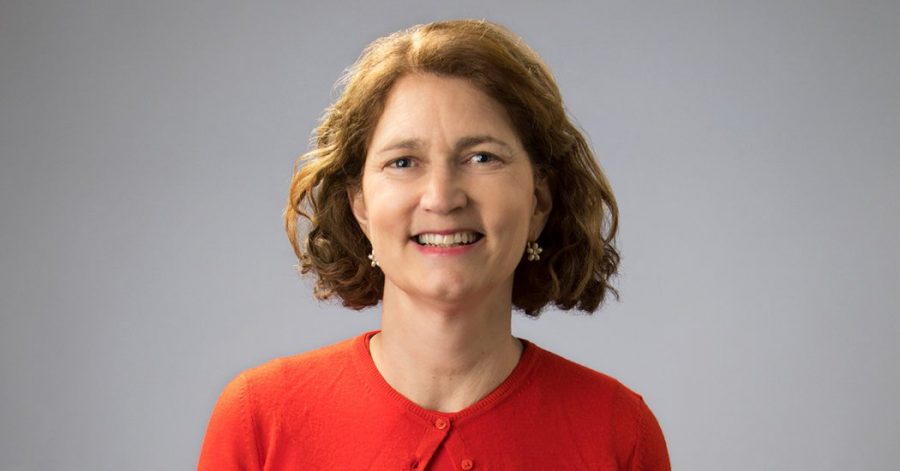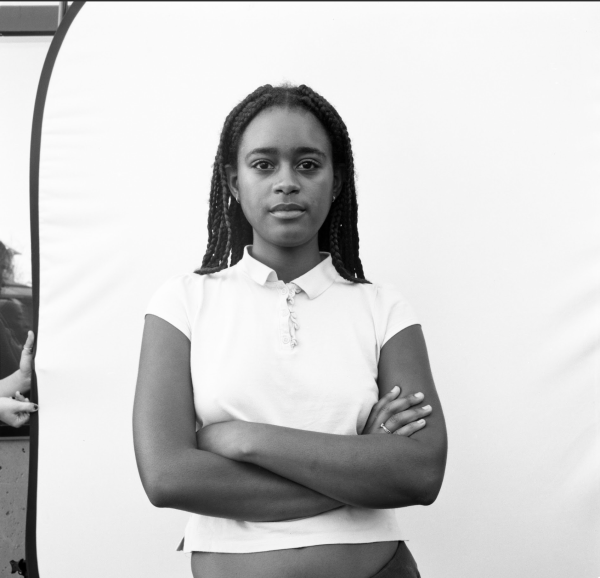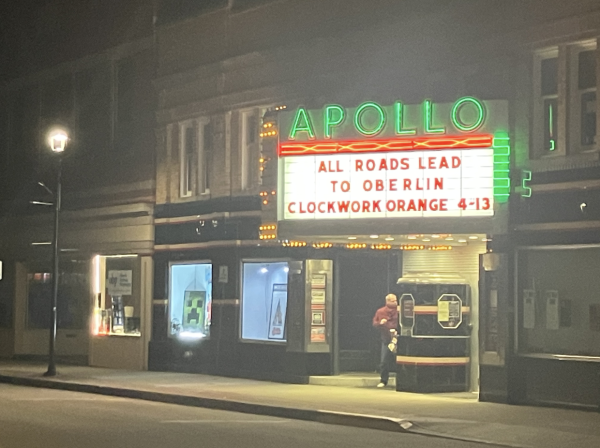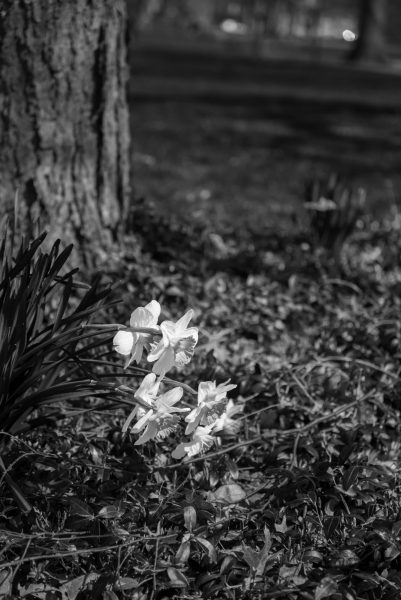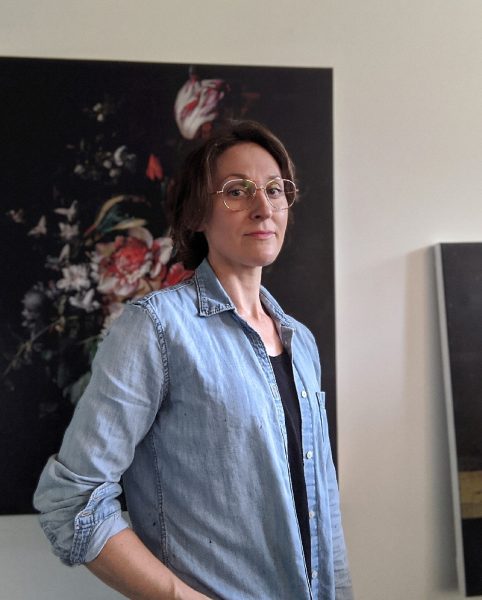Stephanie Wiles, Yale Art Gallery Director
Photo courtesy of Yale University
Stephanie Wiles, recently appointed Henry J. Heinz II Director of the Yale University Art Gallery.
Stephanie Wiles, currently the Richard J. Schwartz Director of the Herbert F. Johnson Museum of Art at Cornell University, has been appointed the Henry J. Heinz II Director of the Yale University Art Gallery, beginning in July. She has spent the last 20 years working at several university museums, including a stint as the director of Oberlin’s Allen Memorial Art Museum from 2004 to 2011. She is acclaimed for her expertise in old master drawings, prints, and British and American art, and has brought works from the likes of Rembrandt, Van Rijn, and Sol LeWitt to Oberlin. Wiles came back to Oberlin last Monday to give a talk, titled “Transforming Perspectives Through Art,” in which she spoke about the role of museums in shaping and challenging student learning perspectives on various subjects, often through technology and innovative thinking.
This interview has been edited for length and clarity.
Can you tell me about your background and how you got into art?
I was a modern languages major in college, but I always loved art. I think [it happened when] I went on my study trip abroad in college, when I went to Vienna to study German. I fell in love with the Kunsthistorisches Museum — the biggest museum in Vienna — and paintings, and just kind of realized that that was my calling. I was always an artist myself, but not a great artist. So when I was graduating college I thought about all my favorite museums, and the Morgan Library I loved because I loved drawing, and so I wrote a letter out of the blue to the drawings and prints department and took a two-year position typing catalogue cards, and that was the beginning of my career.
Can you tell me about working in Oberlin? How did you get your job at the Allen, and what was it like working here?
I had spent so much time in New York City at the Morgan Library that I’d never really thought about going to a college or a university museum, but when I was having my first child, we realized that our jobs were so busy that we might want to try something else. A job came up in Wesleyan and I went there, and it was great and I learned to teach. But I really wanted to work in a museum again that had paintings and sculptures, and the Oberlin job just came up out of the blue. I knew nothing about it except for what I knew about the collections, but I had never been there in person. I only knew from looking at books and seeing how great the collections here were. So I took a trip out before I applied for the job just to see what it was like, and when you see the museum you just fall in love with it. So here, I really got excited thinking about contemporary art, which I never had an opportunity to do at the Morgan Library because they didn’t do contemporary art then, [but] now they do. And I can say that the faculty and the students here were so fantastic. We came up with all these great ideas together and really transformed what the museum did. Oberlin students are great.
You’ve been to a lot of universities over the course of your career. What attracts you to university life?
It was Oberlin that really made the difference. I love working with objects, so I wanted to be in a museum, but I love the teaching part of it. I think I wouldn’t have realized, without Oberlin, how many different ways a collection could be used in opening people’s eyes to culture and science and technology. So I have to give credit to Oberlin for all of that.
What do you think about all the people who attended your talk today? Why do you think more students weren’t a part of it, and what message would you like to give students about your lecture?
I think the people who came are people I knew from when I was here, so it was kind of like old-home week. This is a really tough time in the semester — it was the only time I could come. Students are really feeling overwhelmed. I have a daughter in college who is texting me endlessly about how she’s never going to get all her work done. So honestly, I’m glad they weren’t here if it meant they were in the library working. But I think the takeaway for students is just [to keep] an open mind, not just about art — but, I mean, I was talking about that because I’m working on [it] … but objects of all kinds might make you look at the world a little bit differently. You might just have a different inspiration that you’ve never had before that might take you down a different path, [which] might even make you a better person. I really do feel that with everything that has been going on in the world, in politics and the #MeToo movement, I really think we can’t do enough to keep ourselves open and empathetic, and I believe that art can do that when we look at it.
Careers in the humanities and arts are becoming difficult to find. How did you become so successful in your career, and what advice would you give to students?
[There are] actually a lot of jobs in museums, not as curators necessarily, but in communications — and there’s a lot of new interesting work being done. I’ve seen that humanities students who have learned to think critically, who can write, who can express themselves, and no matter what field they go into, those skills are really important. We need humanities students in this world. We need them because they’re going to be the ones who come with the open minds, who are going to [bring] a little bit more of a broader education. I feel like [if] you go and work in [a] tech company [with] communications as an English major, and I think you’re going to be bringing more to those tech people than they would be bringing to you. And that’s just my belief in the humanities. It’s something that really makes us human, and really helps us understand our whole person and our whole being, not just our job. Getting a job is important, and there are jobs out there, believe it or not, in foundations and others, but there are a lot of museum jobs, and I think we’re trying to open it up to people from other fields, too. You don’t necessarily have to have the art history major.
You talked a lot about the intersection of technology in your work, could you explain that for readers?
[We’re] really always trying to think, “What are the new tools?” Technology is only just presenting us with new tools to look at things in new ways. We’re trying to expose students to this, to understand they’re only tools, and … these tools are going to help move their knowledge along and deepen and further it, so it’s really good to be aware of the kind of tools that are out there — and that’s what we can do. We can bring it to their attention, and then they can take something that they are inspired by and run with it and know way more than I would know, probably, by the time they get finished. So technology is important, but it’s only a tool. I think you come back to your question about how important thinking is and what the humanities can do for you to make sure you use those tools in the most creative and innovative ways possible.
Is there anything else you would like to add?
Just that it’s great to be back here. Everybody, go to the Allen [Memorial] Art Museum and start looking in a new way.


